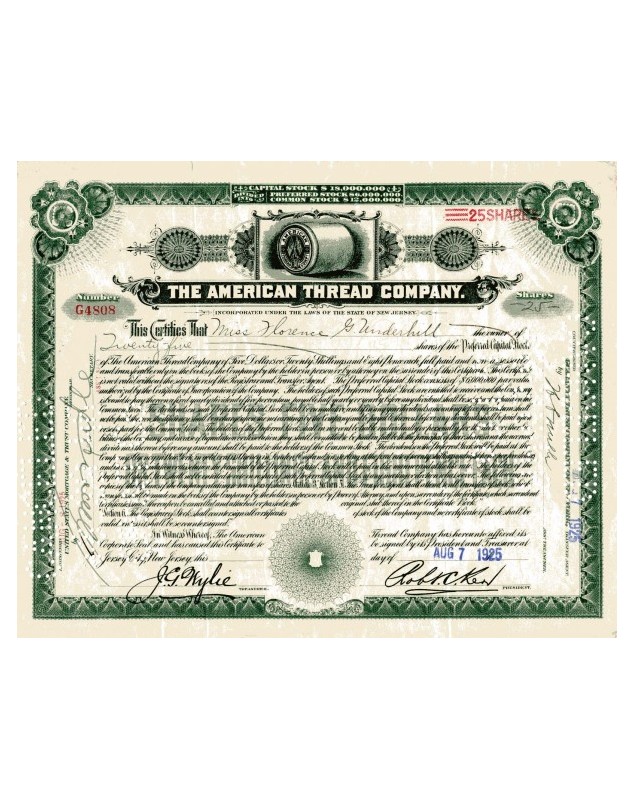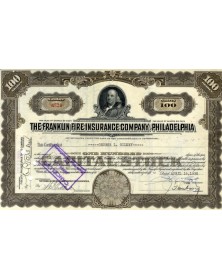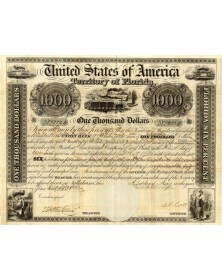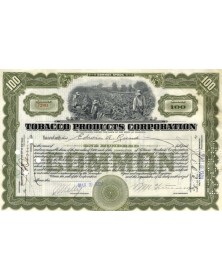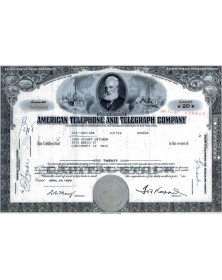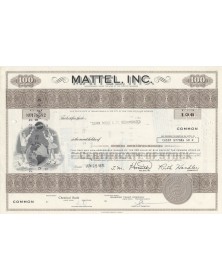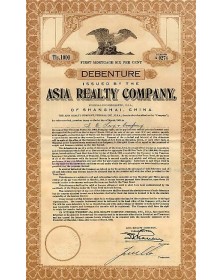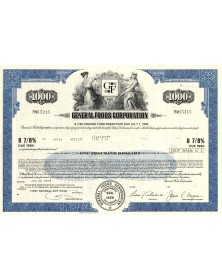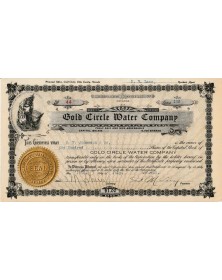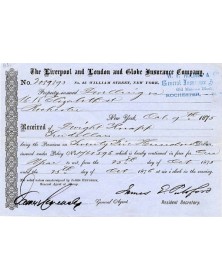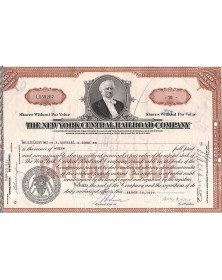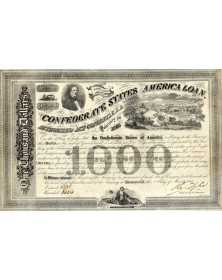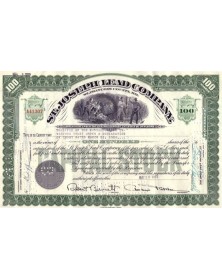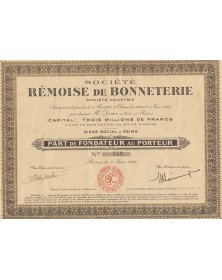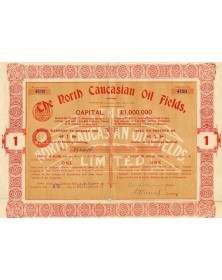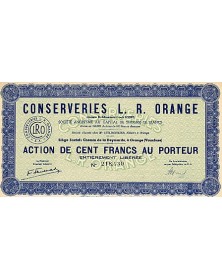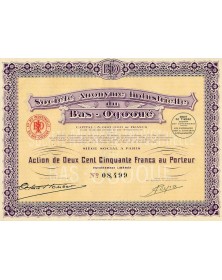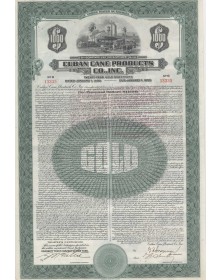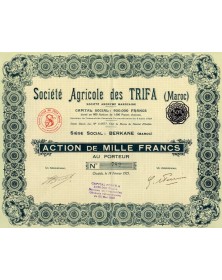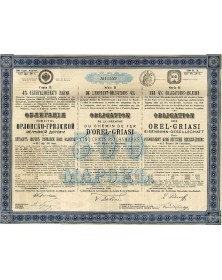The American Thread Company
Certificate of 25 Shares of 5$,20 Sh. & 8 Pc. - New Jersey 1925
Cotton thread may seem to be an insignificant factor in the development of American industry.
However, the domestic production of thread and doth on a commercial scale represented the beginning of America's transformation from an agrarian to an industrial society. Until the 19th century most clothing was sewed at home in the United States, but events in England eventually led to the establishment of an American textile industry.
It all began during the 18th century, when spinning machines were developed in England. By 1771 Richard Arkwright had established a factory there to produce cotton cloth on machines driven by water power. The Industrial Revolution bloomed in England, but not in the newly independent United States. The English were determined to maintain their monopoly, and thus no machines, plans or operators were permitted to leave the country.
Nevertheless, the spinning machines and the factory system of mass production were introduced into America. Samuel Slater (1768-1835), who had worked as an apprentice in the English cotton mills, was able to leave the country in disguise. He did not have plans, but his prodigious memory enabled him to make the spinning machines. He formed a partnership with Moses Brown in Pawtucket, Rhode Island, and on December 20, 1790 their mill produced the first cotton yarn made automatically in the United States. Slater soon married Hannah Wilkinson, daughter of the blacksmith who helped build the machinery.
Over the next century several thread-producing mills were established in New England. Then in 1898 13 mills, nearly every thread maker in New England, combined to form the American Thread Company. The firm was incorporated in New Ier-sey with $18,000,000 in capital. About 60 percent of its stock was sold in England, and this apparently explains why spools of American thread bear depictions of both the British and American flags. Cotton thread may seem to be an insignificant factor in the development of American industry. However, the domestic production of thread and doth on a commercial scale represented the beginning of America's transformation from an agrarian to an industrial society. Until the 19th century most clothing was sewed at home in the United States, but events in England eventually led to the establishment of an American textile industry. It all began during the 18th century, when spinning machines were developed in England. By 1771 Richard Arkwright had established a factory there to produce cotton cloth on machines driven by water power. The Industrial Revolution bloomed in England, but not in the newly independent United States. The English were determined to maintain their monopoly, and thus no machines, plans or operators were permitted to leave the country. Nevertheless, the spinning machines and the factory system of mass production were introduced into America. Samuel Slater (1768-1835), who had worked as an apprentice in the English cotton mills, was able to leave the country in disguise. He did not have plans, but his prodigious memory enabled him to make the spinning machines. He formed a partnership with Moses Brown in Pawtucket, Rhode Island, and on December 20, 1790 their mill produced the first cotton yarn made automatically in the United States. Slater soon married Hannah Wilkinson, daughter of the blacksmith who helped build the machinery. Over the next century several thread-producing mills were established in New England.
Then in 1898 13 mills, nearly every thread maker in New England, combined to form the American Thread Company. The firm was incorporated in New Ier-sey with $18,000,000 in capital. About 60 percent of its stock was sold in England, and this apparently explains why spools of American thread bear depictions of both the British and American flags.
Design of a thread reel.
Data sheet
- Country
- USA
- Theme
- Textiles
- Design
- Yes
- Condition
- EF

